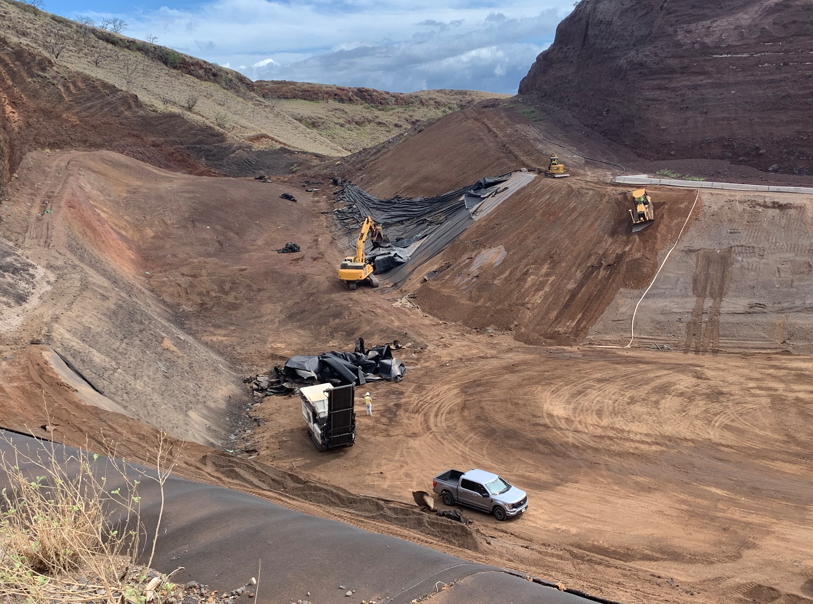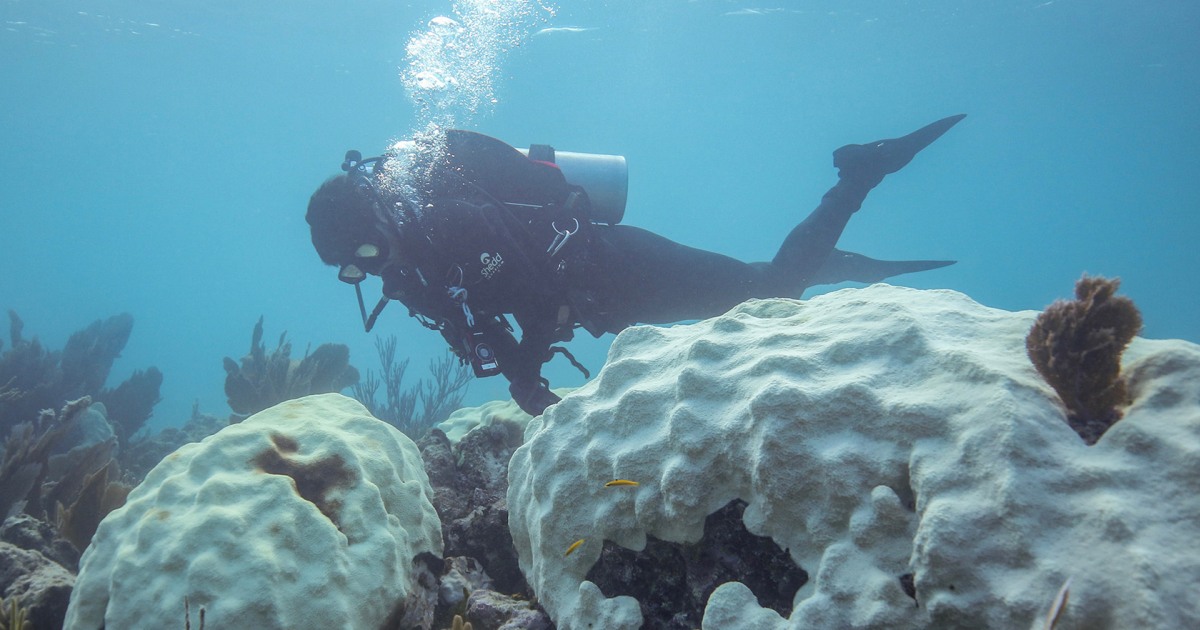Public Concern Over Artificial Intelligence’s Environmental Impact and Sustainable Development Goals
A recent poll indicates significant public apprehension in the United States regarding the environmental sustainability of the rapidly expanding Artificial Intelligence (AI) sector. These concerns directly intersect with several key United Nations Sustainable Development Goals (SDGs), particularly those related to energy, water, climate, and sustainable industry.
Key Findings from Public Opinion Survey
Level of Concern
- Approximately 40% of U.S. adults express extreme or very high concern about the environmental impact of AI.
- Public anxiety regarding AI’s environmental footprint surpasses that for other sectors with known environmental impacts, including cryptocurrency mining, meat production, and air travel.
Demographic Variations
- Democrats exhibit the highest level of concern, with approximately half reporting they are “extremely” or “very” concerned.
- A significant portion of independents and Republicans, about one-third, also share this high level of concern.
AI’s Impact on Core Sustainable Development Goals
SDG 7 (Affordable and Clean Energy) and SDG 13 (Climate Action)
The expansion of AI infrastructure presents a formidable challenge to achieving clean energy and climate action targets. The sector’s escalating energy demand threatens to increase reliance on fossil fuels, thereby undermining progress on SDG 7 and SDG 13.
- The International Energy Agency projects that electricity consumption from data centers will more than double globally by 2030, with the United States accounting for the largest share of this increase.
- Much of this new demand is expected to be met by power plants burning fossil fuels, which directly contributes to greenhouse gas emissions and global warming.
- In response, major technology companies are exploring alternative energy sources, such as next-generation nuclear technology, while also reportedly scaling back corporate carbon reduction commitments.
SDG 6 (Clean Water and Sanitation)
The operational requirements of AI data centers place a direct strain on local water resources, creating a conflict with SDG 6, which emphasizes the sustainable management of water.
- Data centers require a tremendous amount of water for cooling purposes to maintain operational temperatures.
- This high consumption can strain local water supplies, leading to community opposition and raising critical questions about resource allocation and sustainable water management.
SDG 8 (Decent Work and Economic Growth) and SDG 9 (Industry, Innovation, and Infrastructure)
While AI is a driver of innovation and new infrastructure (SDG 9), its broader societal and economic impacts are viewed with apprehension, potentially conflicting with the goal of inclusive and sustainable economic growth (SDG 8).
- A significant portion of Americans believe that over the next decade, AI will do more to hurt than help the economy and society as a whole.
- Concerns about job displacement due to automation, particularly in customer service and cashier roles, highlight potential negative impacts on the goal of decent work for all.
- Public opinion is divided on whether AI will personally help or hurt individuals, with about half expressing uncertainty or expecting no significant difference.
Policy and Governance Implications for Sustainable Development
Regulatory Framework and SDG 16 (Peace, Justice, and Strong Institutions)
Governmental approaches to fostering AI development have implications for SDG 16, which calls for effective and accountable institutions. Proposed policies that prioritize rapid technological growth over environmental protection challenge the principles of sustainable governance.
- U.S. government plans to achieve “global dominance” in AI include proposals to reduce environmental regulations to expedite the construction of AI supercomputers.
- This strategy, coupled with a policy preference for fossil fuels over renewable energy projects, creates a direct conflict between industrial objectives and national and global sustainability commitments.
1. Which SDGs are addressed or connected to the issues highlighted in the article?
SDG 6: Clean Water and Sanitation
- The article highlights the significant water consumption of AI data centers, stating they “need a tremendous amount of water to keep cool.” This directly connects to the sustainable management of water resources, a core component of SDG 6.
SDG 7: Affordable and Clean Energy
- The primary concern discussed is the “massive amounts of electricity” required to power AI. The article notes that this electricity often comes from “power plants that burn coal, oil and natural gas,” but also mentions that tech companies are exploring “next-generation nuclear technology” and “clean energy.” This addresses the challenge of meeting growing energy demands while transitioning to sustainable energy sources.
SDG 8: Decent Work and Economic Growth
- The article touches upon the socio-economic impacts of AI. A worker expresses concern that “as AI continues to grow and advance, that we’re just not going to need any cashiers or customer service people altogether.” This fear of job displacement relates to the goal of ensuring productive employment and decent work for all.
SDG 9: Industry, Innovation, and Infrastructure
- The article focuses on the rapid construction of “massive data centers,” which are a form of industrial infrastructure. The environmental impact of this infrastructure and the push for more sustainable technology (like AI figuring out how to build clean energy efficiently) are central themes, aligning with the goal of building resilient and sustainable infrastructure and fostering innovation.
SDG 13: Climate Action
- This is a central theme of the article. It explicitly states that burning fossil fuels for the electricity needed by data centers “emits carbon dioxide, trapping heat in the atmosphere and warming the planet.” The public’s concern about AI’s environmental impact surpassing that of other industries that “worsen climate change” directly links the topic to SDG 13.
SDG 15: Life on Land
- The article mentions a concern that “data centers will be built on land that should be preserved or used for other things, such as farming.” This issue of land use and its impact on natural habitats and ecosystems connects to the goal of protecting terrestrial ecosystems.
2. What specific targets under those SDGs can be identified based on the article’s content?
-
SDG 6, Target 6.4
By 2030, substantially increase water-use efficiency across all sectors and ensure sustainable withdrawals and supply of freshwater. The article’s statement that “Data centers need a tremendous amount of water to keep cool” and that some communities oppose them for this reason points directly to the need for greater water-use efficiency in the tech industry to ensure sustainable water management.
-
SDG 7, Target 7.2
By 2030, increase substantially the share of renewable energy in the global energy mix. The article highlights the problem that electricity for data centers often comes from fossil fuels. It also notes that major tech companies are “investing in next-generation nuclear technology” and that one person hopes AI will show how “clean energy can be built in an efficient, profitable way.” This directly relates to the target of shifting the energy mix towards renewables.
-
SDG 9, Target 9.4
By 2030, upgrade infrastructure and retrofit industries to make them sustainable, with increased resource-use efficiency and greater adoption of clean and environmentally sound technologies and processes. The entire discussion revolves around the sustainability of AI infrastructure (data centers). The concerns about energy and water use, and the potential for AI to find more efficient solutions, align with this target of making industries and infrastructure more sustainable and resource-efficient.
-
SDG 13, Target 13.2
Integrate climate change measures into national policies, strategies and planning. The article mentions a plan to achieve “global dominance” in AI by “cutting back environmental regulations to speed up the construction of AI supercomputers.” This is a direct example of national policy and planning that has significant implications for climate change, making this target highly relevant.
3. Are there any indicators mentioned or implied in the article that can be used to measure progress towards the identified targets?
-
Electricity Consumption from Data Centers
The article explicitly states that “Electricity consumption from data centers is set to more than double globally by 2030, according to the International Energy Agency.” This metric can be used as an indicator to track energy demand from the AI industry, relevant to SDG 7 and SDG 9.
-
Share of Fossil Fuels in Energy Supply for AI
The article implies this indicator by stating that “In many places, the electricity for data centers will come from power plants that burn coal, oil and natural gas.” Tracking the percentage of energy for data centers that comes from fossil fuels versus clean sources would measure progress towards Target 7.2.
-
Public Concern about Environmental Impact
The poll results provide a specific indicator: “About 4 in 10 U.S. adults say they are ‘extremely’ or ‘very’ concerned about the environmental impacts of AI.” This can be used to measure public awareness and pressure for sustainable practices, which is a driver for action on SDG 13 and others.
-
Water Consumption by Data Centers
While not quantified, the article’s emphasis on the “tremendous amount of water” needed for cooling implies that the volume of water consumed per unit of computing power is a critical indicator for measuring progress towards water-use efficiency under Target 6.4.
-
Rate of Job Displacement due to AI
The concern expressed by the cashier about AI making her job obsolete implies an indicator related to employment. The rate of job displacement in sectors vulnerable to AI automation would be a key metric for assessing the impact on SDG 8.
4. Table of SDGs, Targets, and Indicators
| SDGs | Targets | Indicators |
|---|---|---|
| SDG 6: Clean Water and Sanitation | Target 6.4: Substantially increase water-use efficiency across all sectors. | Volume of water consumed by data centers for cooling. |
| SDG 7: Affordable and Clean Energy | Target 7.2: Increase substantially the share of renewable energy in the global energy mix. | Share of renewable vs. fossil fuel energy used to power data centers; Total electricity consumption from data centers. |
| SDG 8: Decent Work and Economic Growth | Target 8.5: Achieve full and productive employment and decent work for all. | Rate of job displacement in sectors like customer service due to AI automation. |
| SDG 9: Industry, Innovation, and Infrastructure | Target 9.4: Upgrade infrastructure and retrofit industries to make them sustainable, with increased resource-use efficiency. | CO2 emissions per unit of computing power; Energy and water efficiency of data center infrastructure. |
| SDG 13: Climate Action | Target 13.2: Integrate climate change measures into national policies, strategies and planning. | Existence and nature of national policies regarding the environmental regulation of AI infrastructure; Percentage of public expressing concern over AI’s environmental impact. |
| SDG 15: Life on Land | Target 15.1: Ensure the conservation, restoration and sustainable use of terrestrial ecosystems. | Amount of land (especially preserved or agricultural land) converted for data center construction. |
Source: finance-commerce.com






